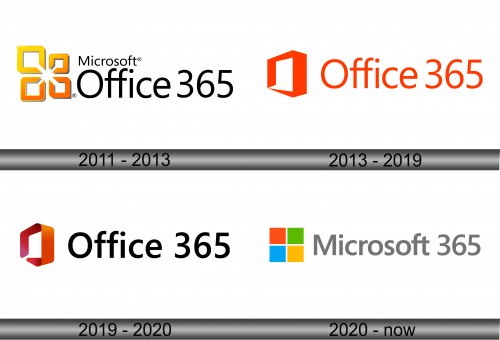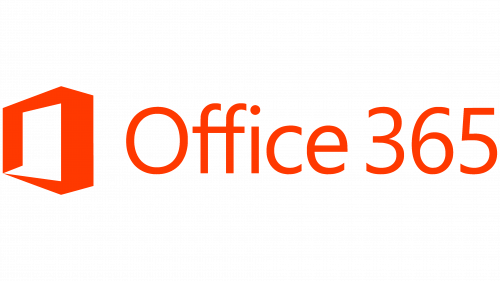Microsoft Office 365 Logo
Microsoft Office 365 is a cloud-based suite of productivity tools and software offered by Microsoft. It includes applications like Word, Excel, PowerPoint, and more, along with cloud storage and collaboration features. Office 365 caters to businesses and individuals worldwide, providing subscription-based access to these tools. Microsoft Corporation owns and manages Office 365, serving as a key player in the global software and cloud services market.
Meaning and history
Microsoft Office 365 has a rich history that evolved alongside the broader Microsoft Office suite and the company’s shift towards cloud-based services.
Microsoft Office, a suite of productivity software including Word, Excel, and PowerPoint, has been a staple in the business world since its launch in 1989.
Microsoft recognized the growing importance of cloud computing and began transitioning its Office suite to the cloud. This led to the development of Office 365.
In June 2011, Microsoft officially launched Office 365. It was a cloud-based subscription service that offered a comprehensive set of Office applications and collaboration tools accessible from anywhere with an internet connection.
Office 365 introduced a subscription-based model, where users paid a monthly or annual fee instead of buying a one-time license. This provided regular updates and access to the latest features.
Over the years, Office 365 evolved with new features, applications, and integrations. It expanded beyond desktop apps to include services like Exchange Online, SharePoint Online, and Skype for Business.
In April 2020, Microsoft rebranded Office 365 as Microsoft 365 to better reflect its broader range of services and features, including enhanced security and AI-powered capabilities.
Microsoft has remained the sole owner of Microsoft 365 throughout its history. The suite has become a dominant force in the business and productivity software market, with millions of users worldwide.
Microsoft continues to innovate, adding new tools like Microsoft Teams for collaboration, Power Platform for automation, and enhancements to existing applications. It also emphasizes cloud integration and security features.
Today, Microsoft 365 is a leading cloud-based productivity suite used by individuals, businesses, and organizations globally, offering a wide range of applications and services that facilitate productivity, communication, and collaboration in the digital age.
2011 – 2013
In 2011, Microsoft introduced the Office 365 platform, aimed at competing with the established Google Workspace. This platform consolidated all of Microsoft’s existing online services and retained the iconic Microsoft Office suite logo, featuring four square frames resembling flower petals with a distinctive yellow-orange gradient. Both logos also prominently displayed the words “MICROSOFT OFFICE,” with the second “Word” in bold. The key distinguishing factor was the addition of “365” in the cloud service’s logo, while the office suite version featured “2010.” This move marked Microsoft’s foray into the cloud-based productivity software arena.
2013 – 2019
A year after its introduction in Microsoft Office, the Office 365 platform adopted a new logo. In this version, only one frame remained, giving it a voluminous appearance with uneven line thickness, aligning with the Metro art style. The service name retained its position, but the word “Microsoft” was omitted, and the colors were transformed to orange. This refreshed design reflected a departure from the previous logo, showcasing a more modern and simplified aesthetic.
2019 – 2020
In 2020, the software product adopted a new logo previously introduced for Microsoft Office a year earlier. This latest iteration featured a three-dimensional frame, achieved through the incorporation of gradient effects, shadows, and highlights. The accompanying text was updated to a sleek black color and utilized a modified font style, marking another evolution in the visual identity of the product.
2020 – Today
In April 2020, a new chapter in the online platform’s journey commenced as Microsoft rebranded it as Microsoft 365. Remarkably, subscription pricing remained unchanged. This transformation primarily centered around functional enhancements and visual identity adjustments. The emblem’s polygonal shape transitioned to a standard Windows checkbox, now presented in a flat design rather than a curved one. Additionally, the word “Office” in black was replaced with “Microsoft” in gray, signifying this shift in branding and product focus.















